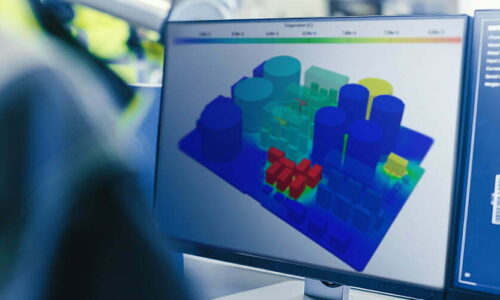Best Chemcad Training Institute in Delhi NCR

Join Best ChemCAD Training in Delhi, ChemCAD Training Course in Delhi, ChemCAD Training Institute in Noida
WHAT IS CHEMCAD?
ChemCAD is Chemstations’ integrate set of chemical process simulation software which has the power and tremendous range of competency to meet an engineer’s chemical process simulation needs, from day-to- day challenges to large, multifaceted projects. ChemCAD broadens an engineer’s capabilities and increases his productivity while facing the difficult chemical process models or addressing day-to- day challenges.
HISTORY OF CHEMCAD
The origins of ChemCAD dates back to over 40 years. The brief history timeline of ChemCAD is as follows:
- 1968: The basis from which ChemCAD was built – CHESS (Chemical Engineering Simulation System) – is set up by Dr. Rudy Motard and Dr. Ernest Henley at the University of Houston.
- 1983: CHESS is ported to PC and turns to MicroCHESS.
- 1985: MicroCHESS is retitled as ChemCAD.
- 1988: Chemstations is established and purchases the rights to ChemCAD.
- 1989: ChemCAD II is released with up to date calculation engine.
- 1993: ChemCAD III is released with the first completely-amalgamated GUI and complete rework in “C” language.
- 1997: ChemCAD IV is released as a Windows-compatible version.
- 2000: ChemCAD 5.0 is released with complete rework in Visual C++ with Microsoft-compatible tools.
- 2007: ChemCAD 6.0 is released with GUI overhaul created on customer/user goal-directed design.
CAREER AND INDUSTRY SCOPE OF CHEMCAD
ChemCAD Training is a part of Chemical Training. The demand for ChemCAD in the Chemical sector has risen rapidly, as the today’s chemical industry faces a number of challenges like increasing fuel and feedstock costs, decrease in number of engineering staff, shorter product life cycles and increased global competition due to which companies demand the best tools to improve productivity and engineering decisions. Here comes the demand for ChemCAD. ChemCAD is a robust and flexible chemical process simulation environment, built around three key values of integration, innovation and open architecture.
Engineering Students who are interested in chemical training can start their career in this field by joining ChemCAD Training from CETPA. Since this sector is highly technical, the pay package excellent right from the beginning.
EXPERTISE OF CETPA IN CHEMCAD
CETPA is a company certified by ISO 9001:2015 and hence provides training according to international standards. CETPA provides 4/6 weeks ChemCAD training and learners get trained from highly skilled and experienced trainers who have proved their integrity in the industry.
CETPA also offers certain bonus point for engineering students
- ChemCAD training is provided in multiple locations: Roorkee, Noida, Lucknow, and Dehradun.
- By working on practical live projects, Indians as well as overseas students increase their confidence.
- Trainers give separate attention to each student for clearing their doubts.
- Content and syllabus of ChemCAD training is revised and updated according to industry standards.
- Provides increased job opportunity for learners in alleged and top MNCs.
INDUSTRIES USING CHEMCAD
Applications of ChemCad are found in various Industries like
- Exploration and Production
- Pharmaceuticals
- Academic University Program
- Process Equipment Manufacturing
- Commodity Chemicals
- Refining
- Custom and Toll Manufacturing
- Fine and Specialty Chemicals
- Engineering and Construction
- Consulting
So, if students want to make their career in these industries, they must enroll for ChemCAD training to make their future brighter.
CETPA PLACEMENT RECORD
CETPA is a training school well known for the placements offered to engineering students in various companies. It has a well established placement and consultancy wing which gives good exposure to students to top companies. Students will get a chance to involve in live project and 100% Job Placement Track records. The certification provided by CETPA helps Indian as well as foreigner students to grab the best opportunity from reputed and MNC companies. It gives the students the value for money and develops their career optimally.
| S.No | Student Name | Company Where Placed | Package |
|---|---|---|---|
| 1 | Vishwesh Mishra | Kites Techno World | 1.22 LPA |
| 2 | Mausam Suri | Kites Techno World | 1.22 LPA |
| 3 | Ankesh K Srivastav | Kites Techno World | 1.22 LPA |
| 4 | Sangita | EI Softwares | 1.2 LPA |
CETPA trains student to be Industry ready and this is reflected in our placements. Students willing to bag a good and exciting career can join CETPA for an exciting experience. For a countless number of placements from CETPA please Click Here.
What are the benefits of doing a ChemCad course?
- You will get better knowledge of programming and how to implement it for actual development requirements in the industrial projects and applications.
- Enhanced knowledge on the web development framework. Using this framework, you can develop dynamic websites swiftly.
- You will learn how to design, develop, test, support and deploy desktop, custom web, and mobile applications.
- Design and improve testing and maintenance activities and procedures.
- Design, implement and develop important applications in a ChemCad environment.
- Increased chances of working in leading software companies like Infosys, Wipro, Amazon, TCS, IBM and many more.
Certification
Professional growth, increased compensation and validation of the skill are the most popular reasons why individuals and professionals seek IT certifications. Keeping this in mind, we at CETPA provide you with certification in latest and innovative technologies to help you to reach your certification goals.
CETPA is the official Training partner of Oracle, Microsoft, Autodesk, Panasonic and Nuvoton and thus provides Training as per international standards and curriculum. CETPA proudly provides you certification in association with our training partners so that you can validate your domain specific technical skills. Certification from these big brands will help you in grabbing your dream job.
IMPORTANCE OF CETPA CERTIFICATION
For individuals and IT professionals:
- Gives you an advantage while searching for a job and provide a competitive advantage over your competitors.
- Ensure knowledge and skill are up to date and can be applied to the job
- Provide credibility to those looking for a career in an IT domain.
- Offer fast track to career advancement
- Demonstrate level of competency
- Professional Credibility as well as it demonstrates your dedication and motivation to professional development.
- You are likely to stand out from the crowd and be considered to be successful in your positions.
- Represent a well-recognized and valued IT credential that increases marketability and competitive edge.
For organizations:
- Provide peace of mind with the confidence that certified employees have truly learned the skills necessary to do their jobs.
- Express valuable credentials to search for in prospective employees, and can help retain top performers when offered as an incentive.
- Offer a competitive advantage when the team is trained and certified regularly.
FAQ
CHAPTER 1 – INTRODUCTION TO CHEMCAD
- Overview of CHEMCAD and Its Uses
- CHEMCAD Products and Features
- CC-STEADY STATE
- CC-DYNAMICS
- CC-BATCH
- CC-THERM
- CC-SAFETY NET
- CC-FLASH
- CHEMCAD Features by Module
- UnitOps by Module
CHAPTER 2- GETTING STARTED WITH CHEMCAD
- Installing the Software
- Licensing CHEMCAD
- Types of CHEMCAD Licenses
- License Settings
- Updating a License
- Getting Help with CHEMCAD
- Online Help
- CHEMCAD Coach
- Procedure Demos
- The Chemstations Web Site
- Contacting Chemstations Technical Support
CHAPTER 3 - THE CHEMCAD INTERFACE
- The CHEMCAD Window
- The Workspace
- The CHEMCAD Explorer Pane
- The Recent Files Tab
- The Simulation Tab
- The Visual Basic Tab
- The Palette Pane
- Selecting a Palette
- Customizing Palettes
- The Messages Pane
- The Errors and Warnings Tab
- The Run Trace Tab
- The Notes Tab
- The Main Menu
- The Toolbar
- Customizing the CHEMCAD Screen
- Viewing and Hiding Screen Elements
- Resizing and Moving Items
- Resizing a Pane
- Moving a Pane
- Pinning and Unpinning Panes Other Useful Interface Hints
- Undo and Redo
- Visible Grid
- Adjusting Your View of the Workspace
- The CHEMCAD Coach Pane
CHAPTER 4 - WORKING WITH SIMULATION FILES
- About CHEMCAD Simulation Files
- User Components in CHEMCAD
- Example Files
- Opening an Existing Simulation
- Creating a New Simulation
- Saving a Simulation
- Saving Different Cases for the Same Simulation
- E-mailing a Simulation
- Working with CHEMCAD Files from Previous Versions
CHAPTER 5 - BUILDING AND USING A BASIC SIMULATION
- Starting a New Simulation
- Selecting Engineering Units
- Drawing the Flow sheet
- Adding UnitOps
- Selecting a Default Icon for a UnitOp
- Manipulating UnitOp Icons
- Drawing and Connecting a Stream
- Choosing a Stream Route .
- Rerouting a Stream
- Other Drawing Tools
- The Text Tool
- Simple Drawing Tools: Rectangle, Ellipse, and Line
- Complex Drawing Tools: Multi-line and Polygon
- Selecting Chemical Components
- Finding a Component
- Adding a Component
- Changing the Order of Selected Components
- Removing Items from the Selected Components List
- Selecting value and Enthalpy Options
- Using the Thermodynamics Wizard
- Selecting Components to Ignore
- Specifying Process Conditions
- How the Thermodynamics Wizard Makes Suggestions
- Should the Thermodynamics Wizard be trusted to make design decisions?
- Manually Selecting Thermodynamics Settings
- Using the Thermodynamics Wizard
- Defining Streams
- Thermodynamic Properties
- Stream Composition
- Total Flow Properties
- Specifying Equipment Parameters
- Running the Simulation
- Reviewing the Results
CHAPTER 6 - USING CHEMCAD FOR HIGHÂFIDELITY MODELING
- What is highâfidelity modeling
- Criteria for Highâfidelity Modeling
- Introduction to Equipment Sizing
- Highâfidelity Modeling and Sizing for Common UnitOps
- Piping
- Low-fidelity
- Sizing
- High-fidelity
- Pumps, Compressors, and Expanders
- Low-fidelity
- High-fidelity
- Vessels and Tanks
- Low-fidelity
- Sizing
- High-fidelity
- Valves
- Low-fidelity
- Sizing
- High-fidelity
- Columns
- Low-fidelity
- Sizing
- High-fidelity
- Heat Exchangers
- Low-fidelity
- Sizing
- High-fidelity
- Relief Devices
- Low-fidelity
- High-fidelity
- Piping
- Licensing Considerations for Highâfidelity Modeling
- License Settings
CHAPTER 7 - BUILDING AND USING A DYNAMIC SIMULATION
- What do we mean by dynamics?
- Licensing Considerations
- License Settings
- Additional Input for Dynamic Operation
- Strategies for Dynamic Simulations
- Setting Up Dynamic Operation
- Switching to Dynamics
- Setting the Run Time
- Selecting Streams and UnitOps
- Running a Dynamic Simulation
- Run from Initial State
- Run from Current State
- Run One Step at a Time
- Other Dynamic Commands
- Reset to Initial State
- Save As Initial State
- Output from Dynamic Simulations
- Reviewing the Flowsheet Specifications
- Plotting Dynamic Results
- Textâbased Dynamic Reports
CHAPTER 8 - OUTPUT AND REPORTS
- Text Reports
- Report Setup
- Stream-based Reports
- Stream Groups
- Stream Compositions
- Stream Properties
- Particle Size Distribution
- Pseudo component Curves
- UnitOp-based Reports
- UnitOp Groups
- Select UnitOps
- Spec Sheet
- Distillation
- Flow sheet-based Reports
- Topology
- Thermodynamics
- Mass and Energy Balances
- Dynamics Reports
- Batch Results
- Dynamics
- Consolidated Report
- Graphical Reports
- Thermo physical Data Graphs
- TPXY
- Binary LLE
- Binodal Plot
- Binodal/Residue Curves
- Residue Curves
- Flow sheet-based Graphs
- UnitOp-based Plots
- Tower Profiles
- Heat Curves
- Plug Flow Reactor Profile
- Pipe Profile
- Controller Convergence
- Dynamic Plots
- User-specified File
- Thermo physical Data Graphs
- Printing CHEMCAD Reports
- Process Flow Diagrams
- Flow sheet Data boxes
- Stream Boxes
- UnitOp Boxes
- TP Boxes
- Excel Range Boxes
- Using the Layers Feature for Selective Viewing and Printing
- Scenarios for Using Layers
- Creating a New layer
- Assigning Objects to a Layer
- Hiding and Viewing Layers
- Removing an Object from a Layer
- Deleting an Entire Layer
- Printing a Process Flow Diagram
- Flow sheet Data boxes
CHAPTER 9 - CUSTOMIZING CHEMCAD
- Flow sheet Templates
- Creating a Template
- Viewing a Template’s Properties
- Applying a Template
- Renaming or Deleting a Template
- Creating Custom Components
- Adding a Single Component
- Creating the Component
- Regressing Data into the Component
- Pseudo component Range
- Importing a Neutral File
- Adding a Single Component
- Creating a Custom Symbol
- Customized Costing Calculations
- Creating Custom UnitOps
- Creating a Custom UnitOp Dialog Box
- Customizing Thermodynamics
- Creating a Custom Kâvalue or Enthalpy Model
- Creating a Custom Mixing Rule
- Visual Basic Applications (VBA)
- Defining a Reaction, Mixing Rule, or UnitOp
- Using a VBAâdefined Reaction
- Using a VBAâdefined Mixing Rule
- Using a VBAâdefined UnitOp
CHAPTER 10 - DATA INTERFACES
- Excel Data Mapping
- Creating an Excel Data Map
- Data Map Execution Rules
- Creating Excel UnitOps
- Specification Sheets
- Using CHEMCAD as an OPC Server
- OPC Applications
- OPC Compliance
- Enabling CHEMCAD as an OPC Server
- Reading and Writing Values to CHEMCAD Using OPC
- OPC Server Operations
- CHEMCAD OPC Namespace
- COM Interfaces
- Connecting Excel and CHEMCAD: A Simple COM Interface
- Using the VBClient Example
- A Peek under the Hood
- Connecting Excel and CHEMCAD: A Simple COM Interface
CHAPTER 11 - DETAILING OF CHEMCAD PRODUCTS
- CCaSTEADY STATE
- Overview
- Starting a New Simulation
- Selecting Engineering Units
- Drawing the Flow sheet
- Placing UnitOps
- Drawing Streams
- Selecting Components
- Selecting Thermodynamic Options
- Defining the Feed Streams
- Enter UnitOp Parameters
- First Heat Exchanger
- Second Heat Exchanger
- Flash Drum
- Valve
- Stabilizer Tower
- Run the Simulation
- Review the Results and Print as Needed
- Checking the Cricondentherm Dewpoint
- Checking the Bottoms Stream Purity
- Re-running the Simulation
- Producing a Text Report
- Generating a Process Flow Diagram
- CCâTHERM
- Overview of the Heat Exchanger Sizing Process
- Identify the Tubeâside Stream
- Generate the Heat Curve
- Define General Specifications
- Set Tube Specifications
- Set Shell Specifications
- Set Baffle Specifications
- Baffle Spacing
- Baffle Cut Percent
- Set Nozzle Specifications
- Set Clearance Specifications
- Set Material Specifications
- Set Miscellaneous Specifications
- Run Sizing Calculations
- Review Results and Create Plots
- CCâBATCH
- Description of the Problem
- Overview of the Batch Distillation Process
- Creating a New Simulation
- Selecting Engineering Units
- Drawing the Flow sheet
- Placing UnitOps
- Drawing Streams
- Selecting Components
- Selecting Thermodynamic Options
- Specifying Pot Charge
- Specifying the Distillation Column
- Defining the Operating Steps
- Operating Step 1
- Operating Step 2
- Operating Step 3
- Operating Step 4
- Operating Step 5
- The Run Time Information Dialog Box
- Running the Simulation
- Reviewing and Printing Results
- Plotting the Results
- Generating Text Reports
- Generating a Full Report
- Piping
- Control Valve Sizing Example
- Problem Statement
- Rating Case
- Flow Rate as a Function of Pressure
- Simple Flow Example
- Problem Statement
- Creating the Simulation
- Using Controllers to Simplify the Problem
- Calculating NPSHA
- Branched Flow Example
- Problem Statement
- Creating the Simulation
- Running the Simulation
Mode/Schedule of Training:
CETPA, The Best ChemCad Training Institute in Delhi NCR offers courses in following modes.| Delivery Mode | Location | Course Duration | Schedule (New Batch Starting) |
|---|---|---|---|
| Classroom Training (Regular/ Weekend Batch) | *Noida/ Lucknow *Dehradun /Roorkee | 4/6/12/24 weeks | New Batch Wednesday/ Saturday |
| *Instructor -Led Online Training | Online | 40/60 Hours | Every Saturday or as per the need |
| *Virtual Online Training | Online | 40/60 Hours | 24x7 Anytime |
| College Campus Training | India or Abroad | 40/60 Hours | As per Client’s need |
| Corporate Training (Fly a Trainer) | Training in India or Abroad | As per need | Customized Course Schedule |
5

Chemcad Training In Noida
I joined ChemCAD-Training in Noida at CETPA in December 2o16. Every concept under ChemCAD was explained to me in detail along with practical examples. I absolutely loved their training!
Chemcad Training In Noida
I joined ChemCAD-Training in Noida at CETPA in December 2o16. Every concept under ChemCAD was explained to me in detail along with practical examples. I absolutely loved their training!
Course Features
- Lectures 0
- Quizzes 0
- Duration 10 weeks
- Skill level All levels
- Students 0
- Assessments Yes







